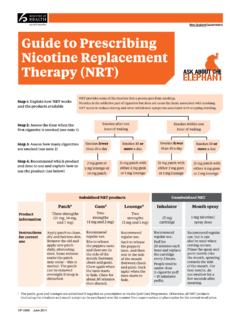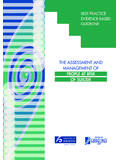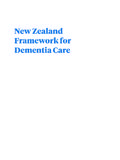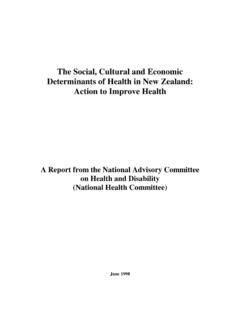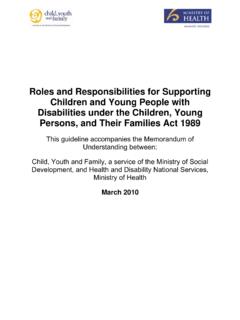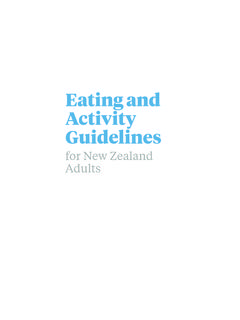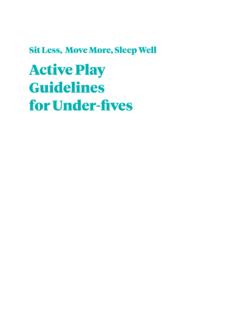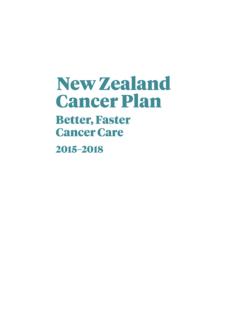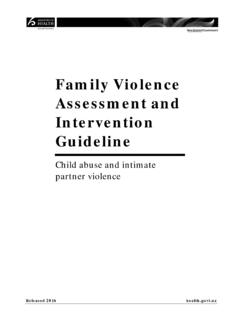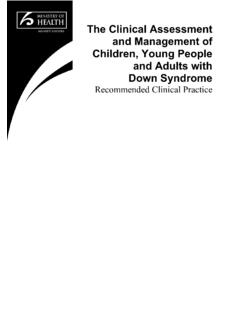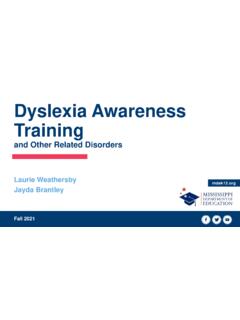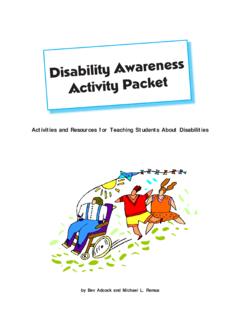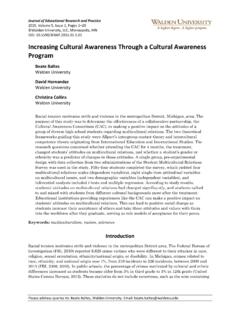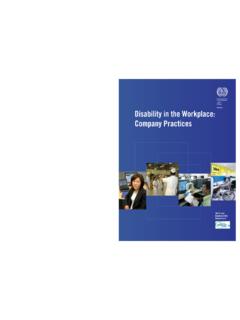Transcription of A Guide to Community Engagement with People with …
1 Released 2017 A Guide to Community Engagement with People with Disabilities The Ministry of Health would like to thank Balance NZ, Disabled Persons Assembly, the Association of Blind Citizens of New Zealand Inc (Blind Citizens NZ), Deaf Aotearoa New Zealand, K p M ori Aotearoa New Zealand (Ng ti K p ), Deafblind (NZ) Incorporated and People first New Zealand Ng T ngata Tuatahi for their active involvement in, and support for, the development of this Guide . Citation: Ministry of Health. 2017. A Guide to Community Engagement with People with Disabilities (2nd edn).
2 Wellington: Ministry of Health. first published in May 2016, 2nd edition April 2017 by the Ministry of Health PO Box 5013, Wellington 6140, New Zealand ISBN 978-1-98-850242-7 (online) HP 6361 This document is available at This work is licensed under the Creative Commons Attribution International licence. In essence, you are free to: share ie, copy and redistribute the material in any medium or format; adapt ie, remix, transform and build upon the material. You must give appropriate credit, provide a link to the licence and indicate if changes were made.
3 A Guide to Community Engagement with People with Disabilities iii Contents Introduction 1 Why equal participation is important 3 Equal participation of People with disabilities 3 Building an inclusive society with strong Community relationships 3 Engagement planning 5 Before engaging with People with disabilities 5 Types of Engagement 5 Who to engage with 6 Early planning 6 Communication considerations 7 Terminology and language 7 Cultural considerations 8 Venue accessibility 10 Web accessibility and online Engagement 11 Feedback 11 Ensuring safety in the Engagement process 11 Undertaking an accessible Community Engagement process 13 Engagement checklist 14 Using images, diagrams, graphs and tables accessibly 17 Using written information and printed materials accessibly 19 Using testimonials 20 Accessible presentations and other verbal communication 21 Venue accessibility 23 Engaging with People who are blind or vision impaired 25 Engaging with People with hearing loss.
4 Who are hard of hearing or who are Deaf 28 Engaging with People with complex communication needs 30 Engaging with People with learning/intellectual disabilities 32 Engaging with People with autism spectrum disorder 34 Legal rights and obligations 36 Making a complaint or raising concerns 37 Disabled People s organisations and resources 38 Government agencies and resources 40 Further resources and organisations 43 Endnotes 48 A Guide to Community Engagement with People with Disabilities 1 Introduction People with disabilities represent a significant percentage of the This Guide offers practical advice about consulting with People with disabilities and reducing barriers to their full participation in their communities.
5 It was developed in association with disabled People s organisations, to assist agencies such as government departments, local bodies, district health boards, schools and Community groups to engage with People with disabilities. Disabilities are diverse and can range from obvious impairments to invisible conditions. This includes People with: a learning/intellectual disability physical impairments including mobility impairments, and those who use mobility devices or other assistive technology sensory impairments/loss, including those with a vision impairment or who are blind and those with a hearing loss, who are hard of hearing or who are Deaf mental health conditions, including those who experience disabling symptoms such as depression.
6 Anxiety or psychosis neurological impairments such as brain injury and autism chronic illness (such as diabetes, arthritis), as well as those whose experience of disability is invisible (eg, People with auditory processing disorders might be able to hear well in one-to-one conversation, but not if there is background noise in a crowded room). Some People experience multiple forms of disability. The presence of multiple disabilities along with the interaction between them can create high and complex needs resulting in an increased need for awareness and sensitivity around Engagement .
7 This Guide focuses on engaging with People with learning/intellectual,2 physical and/or sensory disabilities. However, much of its advice can also be applied to work with People who experience mental health conditions. The principles of the Treaty of Waitangi (Te Tiriti o Waitangi), the New Zealand Disability Strategy,a the Kia T tahi Relationship Accord and the United Nations Convention on the Rights of Persons with Disabilities (the UN Convention) all informed the development of this Guide . The UN Convention was established to promote, protect and ensure the full and equal enjoyment of all human rights and fundamental freedoms by all persons with disabilities, and to promote respect for their inherent dignity.
8 This Guide will help organisations to ensure People with disabilities can access, on an equal basis with others, the physical environment, information and 1 In the 2013 New Zealand Disability Survey, almost one in four New Zealanders or million People identified as disabled. The survey noted that: disability is defined as long-term limitation (resulting from impairment) in a person s ability to carry out daily activities. The limitations identified were self-reported or reported on behalf of the disabled person by their parent or primary caregiver.
9 See Statistics New Zealand. 2014. One in four New Zealanders identified as disabled. URL: (accessed 16 November 2015). 2 Learning/intellectual disability refers to People previously labelled as intellectually disabled . It does not include learning difficulties experienced in the school setting (eg, dyslexia). 2 A Guide to Community Engagement with People with Disabilities This Guide is a living document that will change over time. If you have feedback or content to add please contact Disability Support Services within the Ministry of Health: A Guide to Community Engagement with People with Disabilities 3 Why equal participation is important Equal participation of People with disabilities People with disabilities have long faced considerable barriers to equal participation and involvement in society.
10 The three main barriers that prevent People with disabilities from being active in their communities and having their voices heard are: access to information and services for example, a person with a vision impairment may have difficulty accessing written information about changes in their Community ; or a person with a hearing loss, is hard of hearing or Deaf, may have difficulties accessing information available only through an 0800 telephone line, People with autism are likely to prefer online or printed materials social attitudes and behaviours for example, there can be an assumption that People with disabilities do not work or have children and therefore do not need accessible transport or parenting support.
